TBW-4 IF Transmitter, Rectifier Modulator Unit, HF Transmitter

======================
TBW-4 Rectifier Modulator Unit and HF Transmitter

 --
--



The Trip to get the Rectifier Modulator Unit and HF Transmitter
|
As mentioned in my write up of the TBW-5 transmitter elsewhere on my website, I was looking for an 803 tube socket when Mike Everette WA4DLF contacted me and said he had a TBW-4 and Rectifier Modulator Unit available and asked if I was interested. And, by the way, the TBW was in a transit case! Mike lives in Raleigh NC and that's a day trip for me!
After ironing out the details I made plans to visit Mike a few weeks later in May. Unfortunately, the week before, terrorists shut down the Colonial Pipeline and there was almost no fuel to be obtained in the eastern NC area. I really wanted to make the trip and was looking for a way to do it with the fuel crisis. I figured if I refueled in mid Virginia I could get to Mike's place, load, and get back to mid Virginia with my "IFR Reserve" fuel still in the tank. Well, after thinking about this sanity prevailed and I canceled the trip. Summer being a busy time, Mike and I could not connect until August. My wife and I finally drove down to pickup the TBW the first week of August. Mike is moving and his old house has been used as a storage area. Lots of boxes as you'd expect and I understood why Mike suggested I bring a dolly! Space in the basement was "limited" and of course the TBW was "way back there"! We used the time tested method of moving boxes to make room for boxes, then moving those boxes to get to the radios. Standard fare for those that restore old radios! It took Mike and I longer than expected but we "got 'er done". The TBW and Rectifier Modulator Unit are in excellent condition and I asked Mike if he knew the history of the units. Mike replied: "I found them at the Shelby NC hamfest in 1974 if my memory serves me and they followed me home. It was one of "those" moments of nostalgia prompted by my having had fun with my first TBW-4 back in high school. Unfortunately I never got around to putting the second one on the air, other than using the antenna tuning network with an SSB transceiver (Hallicrafters SR-150) to load a 100-foot end fed wire. That worked very well." |
HF Transmitter Transit Case
TBW-4 HF Transmitter
| The TBW-4 is in clean and stock condition. There is nothing missing! Mike did a slight rewire of the output circuit to act as a tuner for another transmitter, and this can be seen by the extra SO-239 hanging off the capacitor in the upper deck. The original disconnected wire was just moved out of the way and it will be easy to remove this modification. |
 --
--
 --
--

| The following three photos are of relay K-301. This relay opened and closed in sequence with your keying! |
 -- --
 -- --

|
Listen here! |
 --
--
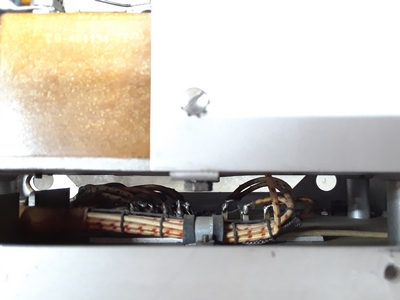 --
--
 --
--



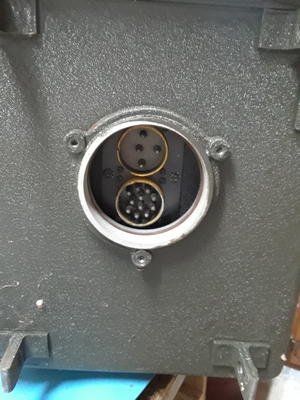














 --
--
 --
--
 --
--
 --
--

 --
--
 --
--
 --
--
 --
--
 --
--

 --
--
 --
--
 --
--
 --
--
 --
--
 --
--
 --
--
 --
--
 --
--
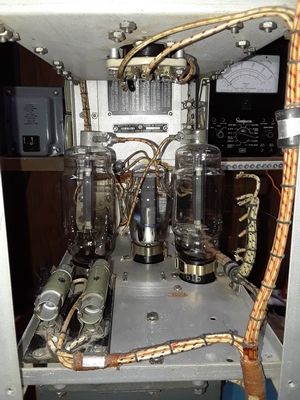 --
--
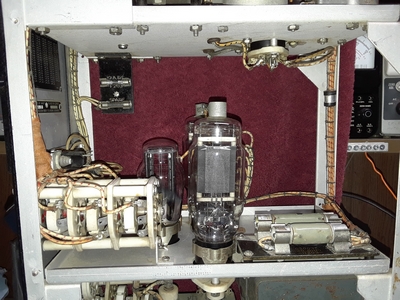
 --
--


 --
--
 --
--



 --
--
 --
--
 --
--
 --
--
 --
--
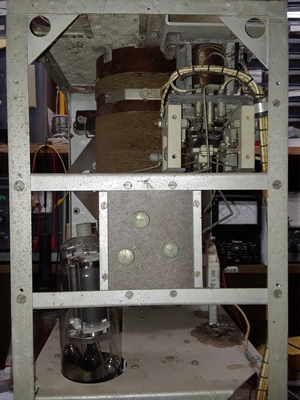 --
--
 --
--
 --
--
 --
--
 --
--
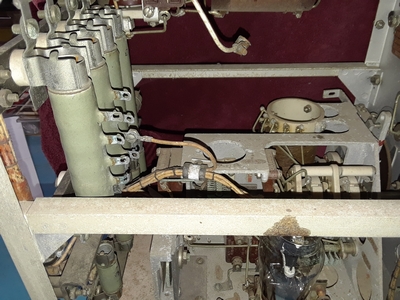 --
--
